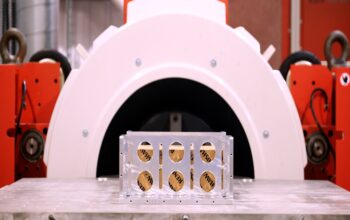Battery cells are made up of alternating layers of anode and cathode foils and are separated by the so-called separator. The stack of foils is then rolled up, packed into a metal housing and the batteries are finally welded securely.
Along the process chain of cell production, our 3D measurement technology and laser technology are used in numerous process steps: in the measurement of the thickness of the electrode foils or the measurement of the cutting burr, as well as in the laser welding of the individual foil layers (foil-to-tab) or in the laser welding of the housing and lid (cap-to-can).
The customer’s requirement for our 3D measurement technology is: accuracies < 1 micrometer. Our sensors meet this requirement and are optimized for the production environments of battery cells, the so-called roll-to-roll applications: high web speeds, vibrating electrode foils, and alternating glossy and black surfaces. In laser technology, cap-to-can laser welding is a crucial application. Here, pinholes must be detected or, at best, avoided altogether. Here, too, we have optimized our products and optics specifically for these applications and developed innovative solutions.
Different cell types for different applications
Three types of lithium-ion batteries are generally used in e-mobility. The batteries work according to the same functional principle and have a high energy density to ensure a long range. Pouch cells, cylindrical cells and prismatic cells are used, which are then connected to form battery modules to be able to provide the necessary power. But how do these cell types differ?
Pouch cells
Pouch cells have a flat and usually rectangular shape and are housed in a flexible plastic case. The flat shape allows for higher energy density and better heat dissipation, which can lead to higher performance and longer battery life. Unlike the other cell types, they do not have a rigid metal housing and are therefore lighter and thinner.
The lack of a metal housing offers advantages and disadvantages: The advantage is that pouch cells can take on almost any contour imaginable. The disadvantage, however, is that these cells swell strongly during charging due to the lack of a metal housing.
Pouch cells are often used in mobile devices such as smartphones, tablets and laptops as well as in electric vehicles and energy storage systems.









